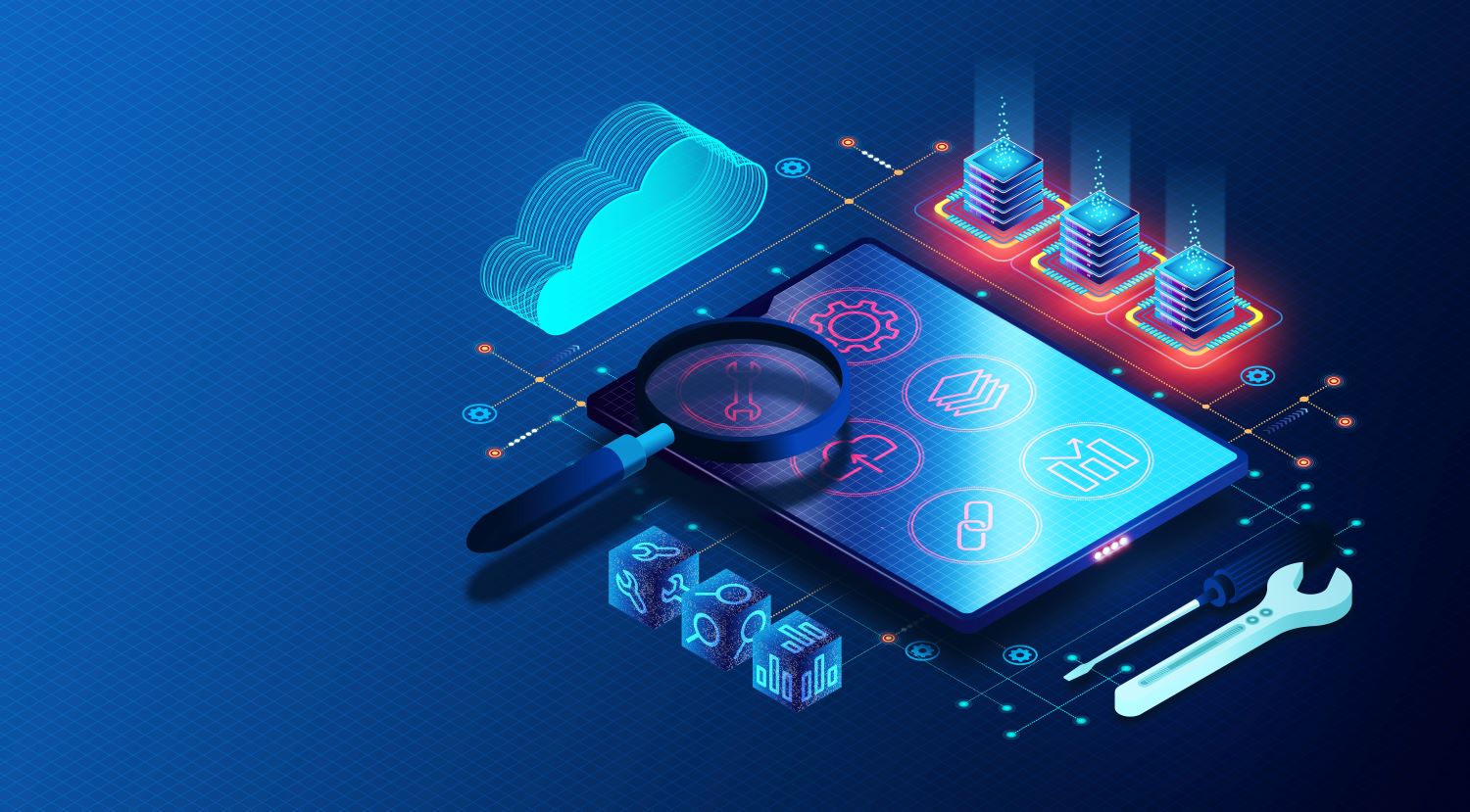In our new five-part series, we’ll be exploring how a successful learning and development (L&D) strategy can differentiate organizations from the crowd, retain talent, and drive growth. In Part 1, experts Michael Hendrix and Julie Cavanaugh outline why a maturity continuum is essential to an effective L&D strategy framework.
Corporate learning and development (L&D) is in the midst of a paradigm shift. Increased globalization, the rise of hybrid working, shifting employee expectations, and rapid technological advancements are fundamentally changing the way we work and the skills needed to succeed. In fact, the World Economic Forum estimates that 1 billion employees will need to be reskilled within the next two years.
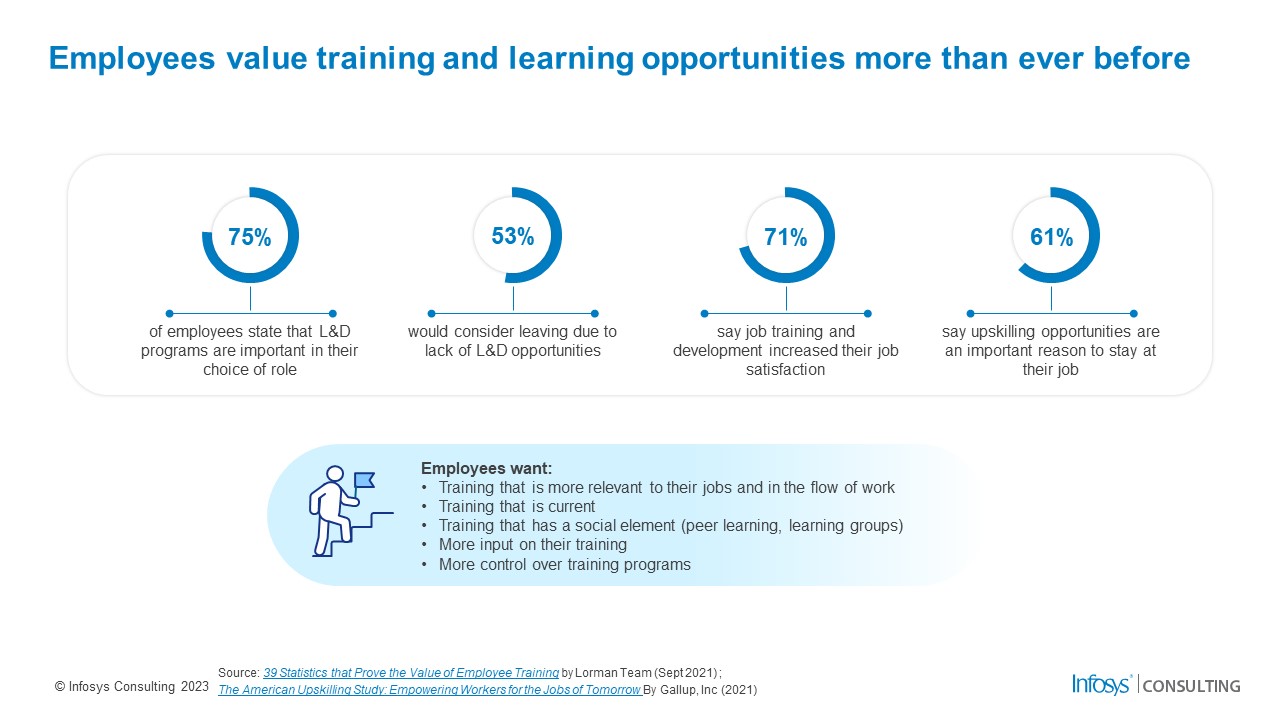
Moreover, people are changing jobs at an accelerated rate – every four and a half years, on average. At the same time, the half-life of a learned skill is estimated at five years, while the half-life of a technical skill is even shorter – just over two years.
This means that employees must be highly adaptable and have access to resources to perform ever-changing roles and navigate non-linear career paths. It explains the shift in employee demand towards a more personalized learning experience.
Successful companies, will be those that are able to leverage L&D as a differentiator, elevating their L&D platforms to meet new employee demands and provide individuals with the resources they need to succeed – both for themselves and the organization they work for.
HOW CAN L&D BE A MARKET DIFFERENTIATOR?
L&D can help companies attract and retain talent as well as drive value.
Today, new generations of employees recognize the significance of professional development opportunities more than ever before. According to Lorman, 53% would consider leaving their current company due to a lack of L&D opportunities and the vast majority cite that quality training and development increases their job satisfaction.
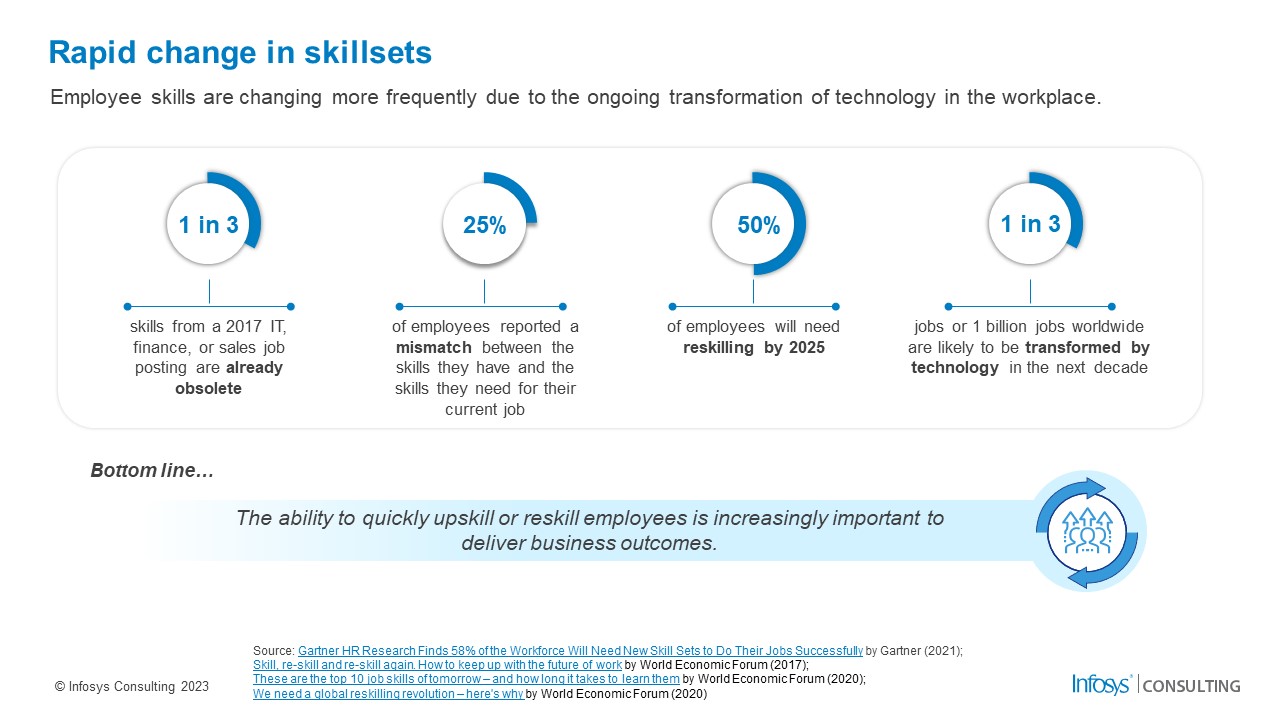
As to business value, new technologies have enhanced opportunities for L&D to be effective and directly drive growth. Organizations must make strategic improvements to their L&D architecture in order to ensure insightful data is available to drive business decisions. At the same time, they must provide learning that is readily available, up-to-date, and seamlessly integrated with the employee experience.
A successful learning ecosystem is comprised of four interrelated and interdependent dimensions. Together, these create a wholistic corporate learning program that enables and motivates employees, creating an efficient differentiated L&D offering. However, by virtue of this shifting landscape, corporate L&D cannot remain stagnant and must mature along with the market and technology forces.
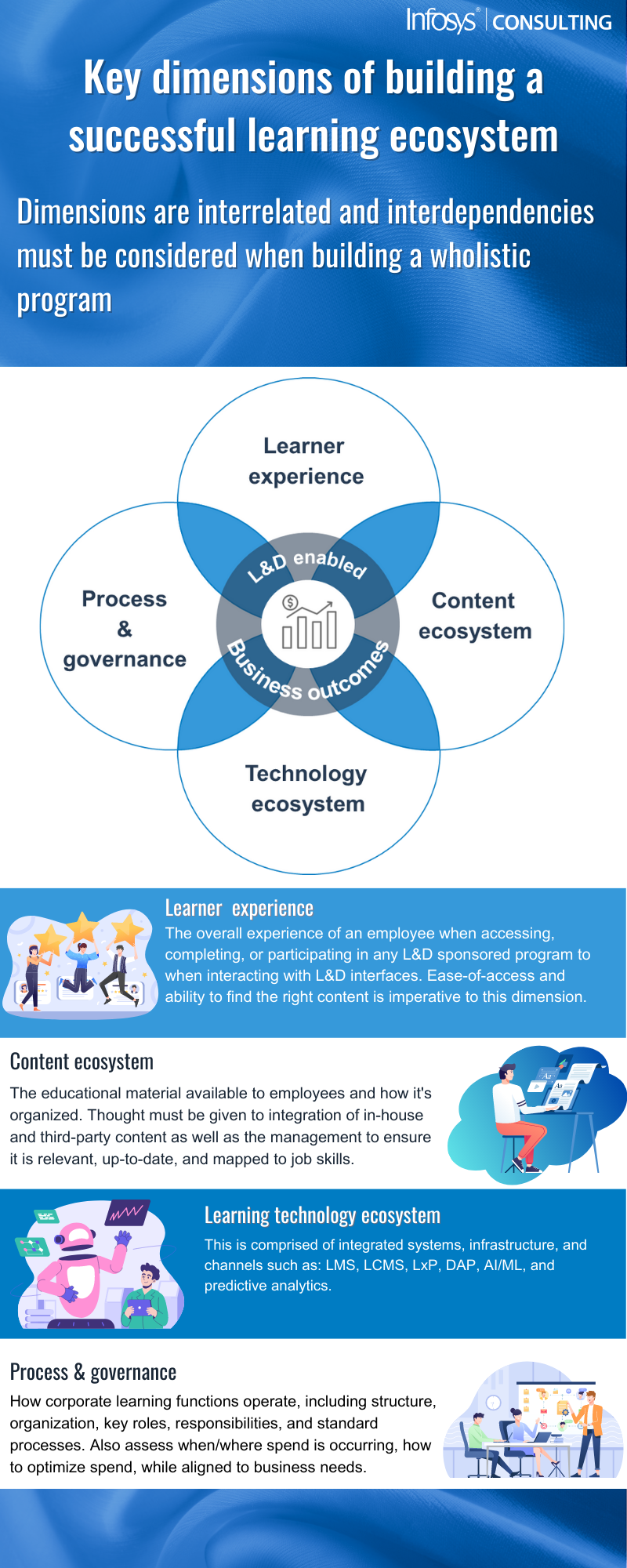
THE MATURITY CONTINUUM: FROM IMPLEMENTATION TO EXCELLENCE
True L&D excellence is achieved when organizations reach a level of maturity that enables employees to learn continuously and drive growth.
There are several levels of maturity that organizations progress to. Each level increasingly leverages business outcomes, empowering employees to own and action their own career paths, and creating a culture of continuous growth and innovation.
However, these dimensions are interrelated and interdependent, so companies may find that moving the needle in one dimension is contingent upon progressing in one or more of the other dimensions.
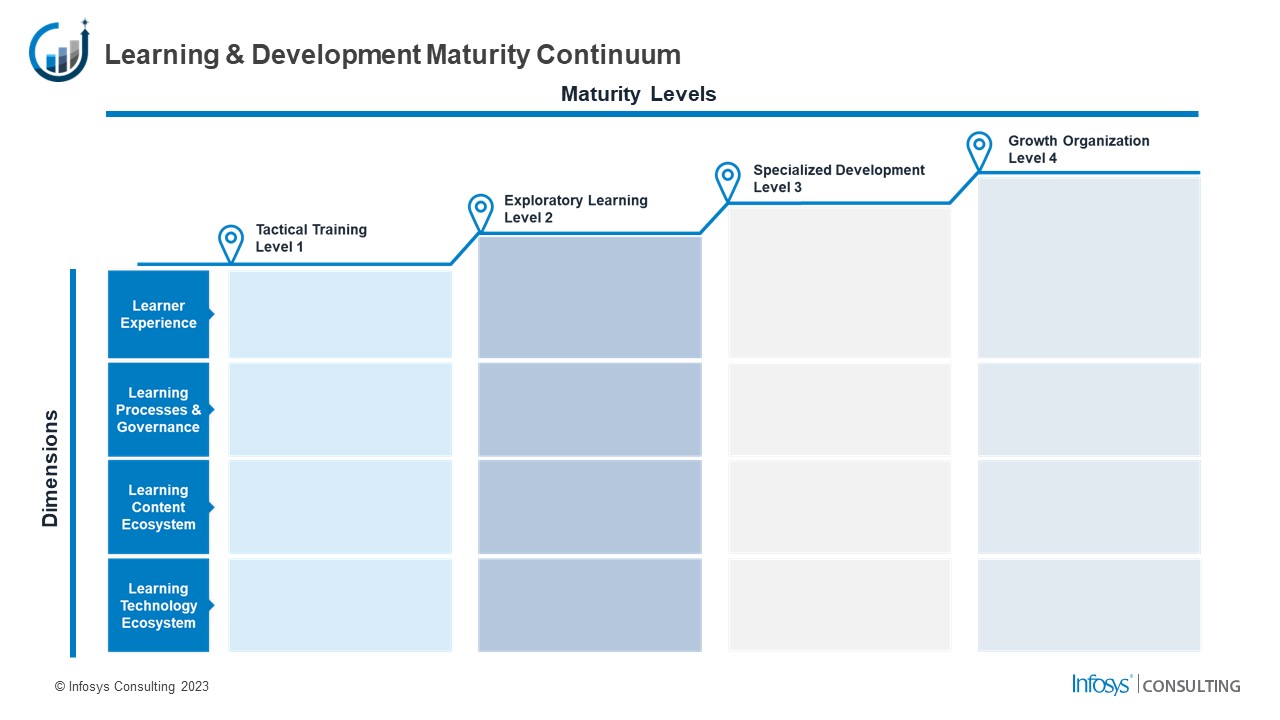
Level 1: Tactical training
This is the standard approach currently adopted by most companies, yet it can’t hold up to current demands. It’s a prescriptive approach to instructional design, content development, and training delivery at business unit level.
The offering here is pretty limited and basic. It’s compliance-focused, with emphasis on departments and business, rather than on the individual. It’s also not the easiest learning platform to use. Content is in multiple locations and libraries, with limited accessibility or search functionality.
Level 2: Exploratory training
At this level, organizations adopt more of a centralized focus and streamline content for easier access and self-paced learning. A culture of exploration is encouraged, increasing eLearning content authoring across departments/business units and providing enterprise-wide accessibility leveraging collaboration tools.
Performance and talent management is involved early, and L&D consultants are aligned with business units to capture demand. In addition, training administration systems or learning management systems (LMS) emerge.
Level 3: Specialized development
The previous level helps organizations lay the groundwork for this level, which enables employees to own their learning path based on their desired skills. Companies operating at this level of maturity promote a culture of continuous learning.
The platform has a universal access point with AI-driven adaptive learning – prioritizing personalization over brush stroke compliance. L&D consultants are tightly integrated with business units and understand the voice of the customer. In addition, data is used to manage curricula, capture demand signals, and predict what employees may need/desire to learn.
All content libraries are tagged to skills and capabilities and organized into early capability academies. And the learning experience platform (LxP) is strongly integrated with multiple LMS and enterprise-wide co-creation collaboration tools.
Level 4: Growth organization
Organizations at this level of maturity are at the forefront of L&D, fostering a culture of innovation and growth. These enterprises enable employees to own their career – planning and consuming based on career expectations and mentoring.
Learning is hardwired into the employee experience through predictive insights powered by an integrated LxP architecture and evolving digital adoption platform experiences. The L&D model is continuously optimized and aligned with the business, and data insights allow L&D consultants to drive demand planning and support capability academies – which are now fully evolved.
Not to mention, that the whole program is linked to talent and performance systems, giving the company and employees a better view on progress and development.
FUTURE OF LEARNING AND DEVELOPMENT
In this age of unprecedented technological change, learning is the linchpin. It’s the most critical factor for developing the right employee skills, enabling enterprise-wide innovation, attracting and retaining talent, and, ultimately, driving business outcomes.
Success will come to those organizations who are willing to move the needle on the four dimensions we’ve discussed, reaching a level of maturity that empowers employees and keeps the firm ahead of the curve.
Keep an eye out for Part 2, where we explain how enterprises can enable an agile learning organization.
To discover how the Infosys Learning and Development Maturity Continuum can unlock value for your organization, reach out to our experts for more information.
